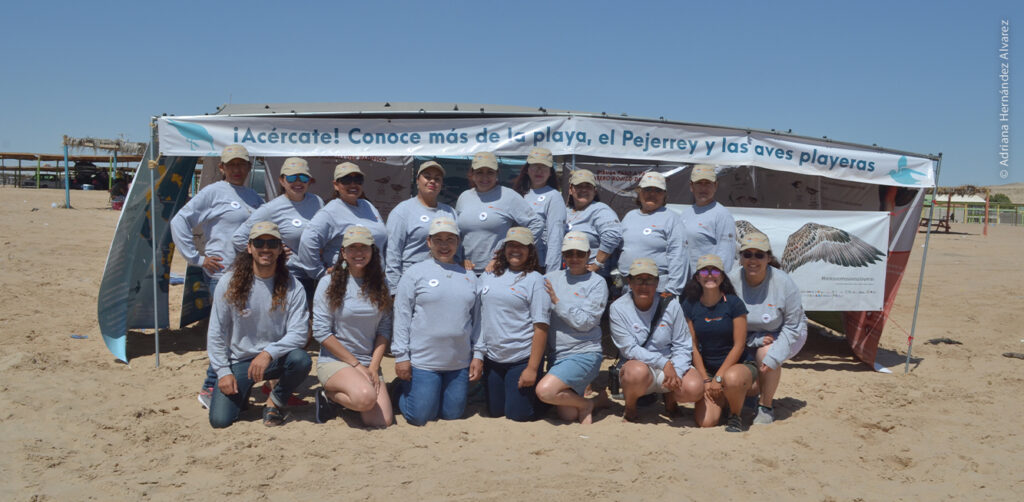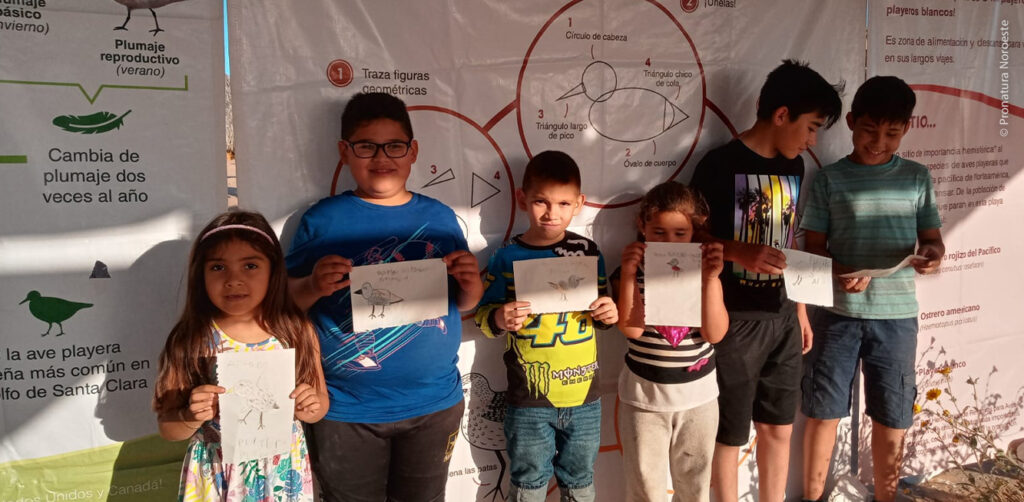Right at the start of spring, the Gulf grunion (Leuresthes sardina) arrived this week in large numbers to begin its extraordinary spawning process on the beach.
The Gulf grunion spawning is a rare event that takes place annually on the sandy beaches of the Gulf of Santa Clara, in the state of Sonora, about 100 kilometers southeast of San Luis Río Colorado and the Arizona border. The he Gulf grunion is an endemic species of the Upper Gulf, similar to the sardine, silver in color, with slightly translucent skin, and a length of 15 to 25 centimeters. Between the months of March and June, it appears forming large shoals very close to the shore. Then, something extraordinary happens. The females take advantage of the high tide and come out of the water for a few seconds to bury their bodies and spawn in the sand. All around them, the males are stirring vigorously to release their semen and thus fertilize the eggs.
The visual effect is very striking, because of the frenetic movement of the fish on the shore and the silver color that stains the beach. This attracts visitors and local people, who in previous years used to invade the area and disturb the spawning of the species. Even more invasive actions have been registered, such as the use of cars, motorcycles, and ATVs on the beach, generating loud noise and pollution that alter the animal’s behavior.

To prevent this, at Pronatura Noroeste we got down to work. As part of our conservation work, we identified the area with the highest concentration of fish, and put up a 350-meters long temporary fence. This will allow visitors to enjoy the unique phenomenon from an adequate and safe distance. The fence will remain in place throughout the spawning and incubation season, including the days following the spawning frenzy of the Silverside, when the newly hatched minnows hatch and are carried out to sea by the waves.
The protective fence will not only benefit hundreds of thousands of silversides, but also numerous shorebirds, such as pelicans, terns and gulls, which take advantage of the abundance of fish to feed. In addition, flocks of migratory birds from Alaska and Canada stop in the Gulf of Santa Clara in synchrony with the silversides. Here they feed and regain strength to continue their long journey south. Some of these species are the Pacific red knot (Calidris canutus roselaari), which is in danger of extinction, and the Sanderling (Calidris alba), among others.

This successful preventive action was achieved in collaboration with the Upper Gulf of California Biosphere Reserve and the Colorado River Delta, as well as with the support of the National Guard. The International Conservation Fund of Canada has made a fundamental contribution to this important conservation task.
Throughout the entire process, visitors receive friendly treatment from the environmental promoters, made up of women residents of the town of the Gulf of Santa Clara who call themselves “Pejerreinas”. Their job is to guide beach users so that they can better enjoy this experience. The Pejerreinas have an information module that will be open from 10: 00 a. m. to 6:00 p. m. on Fridays, Saturdays and Sundays, from March 18th to May 8th, as well as throughout Holy Week.

Also, with our work in Conservation Education, Pronatura Noroeste carries out recreational activities and workshops for teachers and community leaders, as well as guided tours with elementary, middle, and high school students. In this way, students get to know the site and learn about the Gulf Grunion and shorebirds. At Pronatura Noroeste we focus our efforts on these outreach efforts so that residents and tourists become involved in the conservation of their environment and are able to share the beach with other living beings in a healthy way.
We invite you to participate and donate to the conservation of Gulf grunions and shorebirds.












